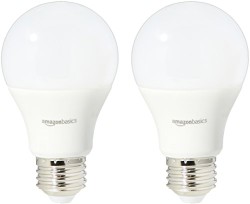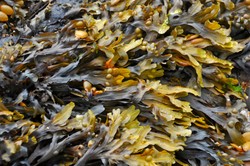An LED uses a barrier within it that allows electrons to flow when a high enough voltage is maintained across it. The semiconductor material has holes where electrons are missing on one side of the barrier, and when the electrons cross the gap they fill the holes. Of course more holes will soon form, so the semiconductor is never going to “fill up.” The gap determines the amount of energy needed to cause the electron to traverse it. That energy possessed by the electron is then given off as light when the electron is captured by a hole. A specific amount of energy produces a specific color.
The process goes not have a filament, and a semiconductor should remain a semiconductor, but there is a useful life of LEDs. However, it is much longer than the useful life of other light bulbs. Hence, there is a long term savings associated with replacing light bulbs. But, this is not the only savings.
LED Comparisons with Tungsten Filament Light Bulbs
The LED light bulb works with one or more LEDs, and each LED can produce a single color. White light is obtained by combining colors, which is done with multiple LEDs, or with a phosphorescent coating that glows a color that mixes with the LED emitted color to produce white light.
A tungsten light bulb uses a thin tungsten filament that heats up when a current passes through it and causes it to glow. The problem is that unseen wavelengths are also emitted, with a large amount of energy in the infrared region of the spectrum, a part of the spectrum associated with heat. Tungsten light bulbs heat up, and can get quite hot. This heat works against air conditioning, and is passes onto the air, heating the atmosphere. As part of the process there is a greater need for energy to obtain the same luminosity as one getss using a LED light bulb.
So, tungsten light bulbs use more energy, and cause the air to heat with unwanted infrared waves. In turn, the air conditioning unit will use more energy to maintain a temperature. Energy used from a power plant often involves burning fossil fuel, adding greenhouse gasses to the atmosphere. So, LEDs are more environmentally friendly than tungsten light bulbs.
It should be point out that LEDs of a variety of types, including decorative bulbs and spotlight bulbs, make conversion to LEDs more feasible.
















 Multivariable Calculus: Gradient, Divergence, and Curl13 days ago
Multivariable Calculus: Gradient, Divergence, and Curl13 days ago
 UAPs, Formerly UFOs, If They Are Real How Can We Explain Their Arrival to Earth?14 days ago
UAPs, Formerly UFOs, If They Are Real How Can We Explain Their Arrival to Earth?14 days ago
 Polar Coordinate System15 days ago
Polar Coordinate System15 days ago
 Aurora Can Disrupt Electrical Devices And Even the Grid?17 days ago
Aurora Can Disrupt Electrical Devices And Even the Grid?17 days ago



Comments
The wider market will improve design, and should bring the price point down.
blackspanielgallery, Thank you for the information and the product line. According to the economic law of demand and supply, the greater the purchases of the LED option, the more likely the triple benefit of durability, eco-friendliness and reasonable price. Would it not seem likely that options such as fitting into pre-existing fluorescent light fixtures and offering special occasion lighting, such as parties, would quickly increase purchases and decrease prices?